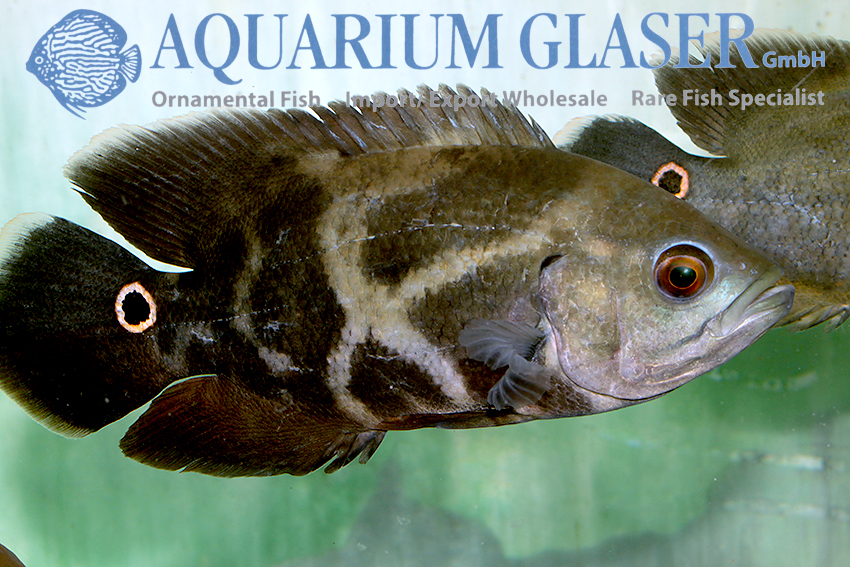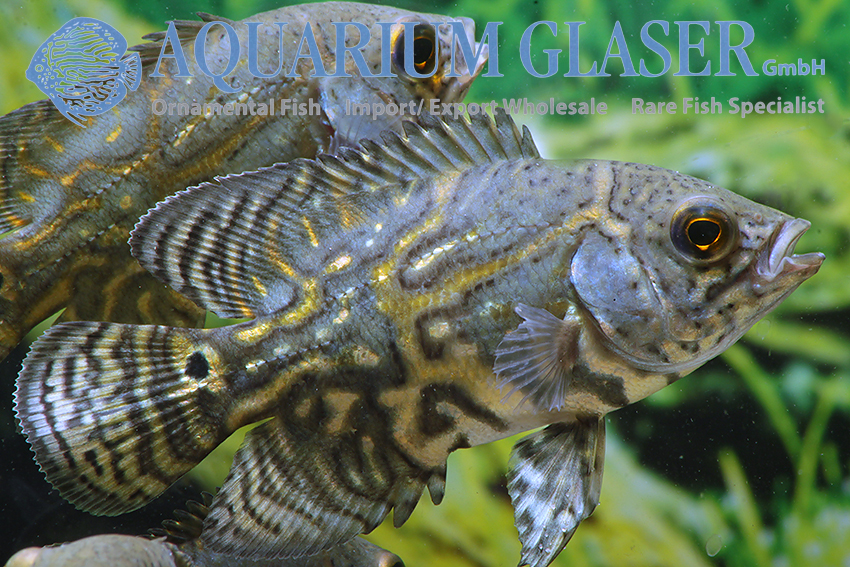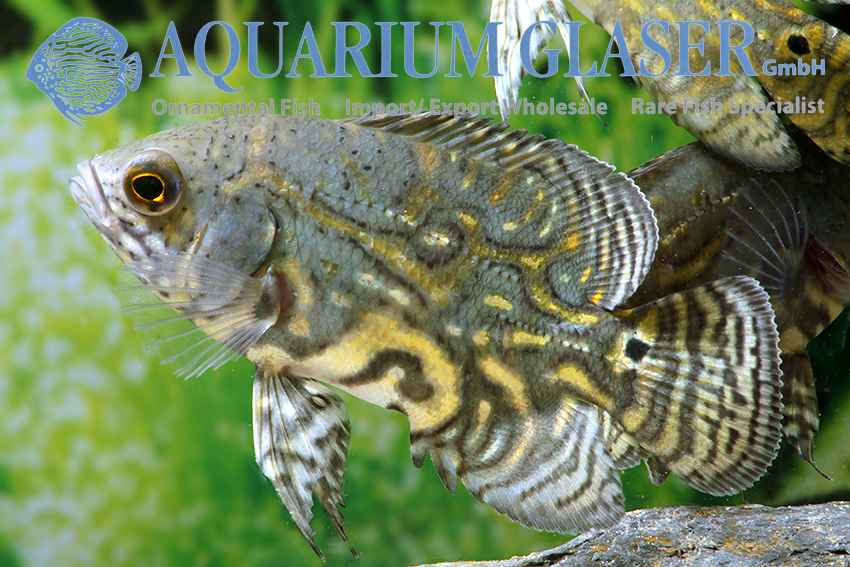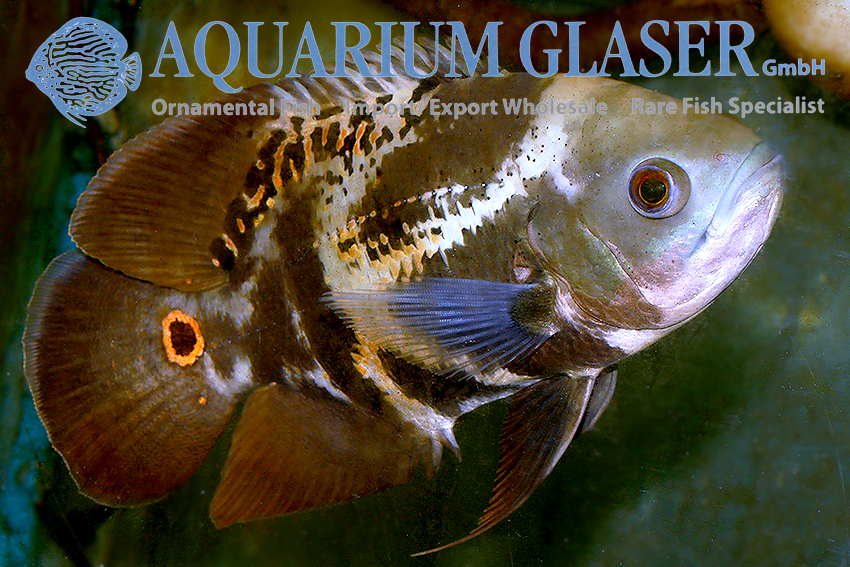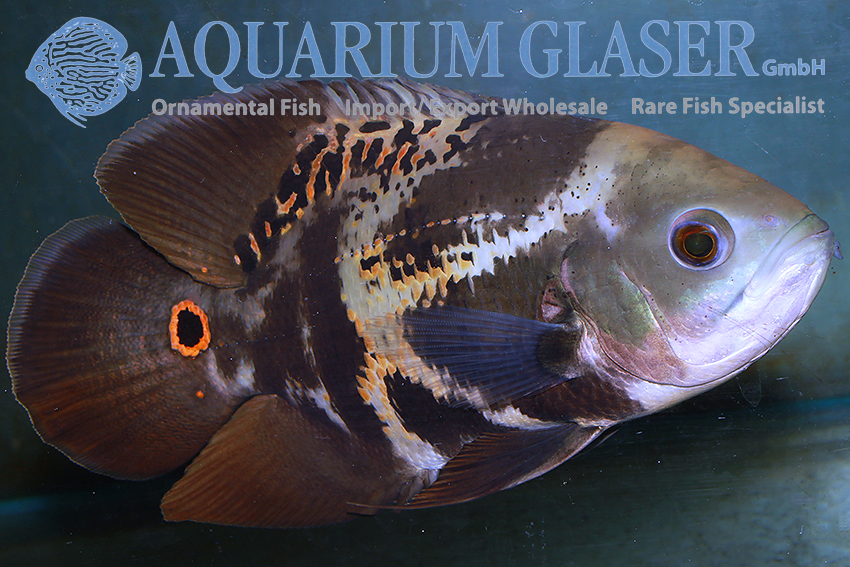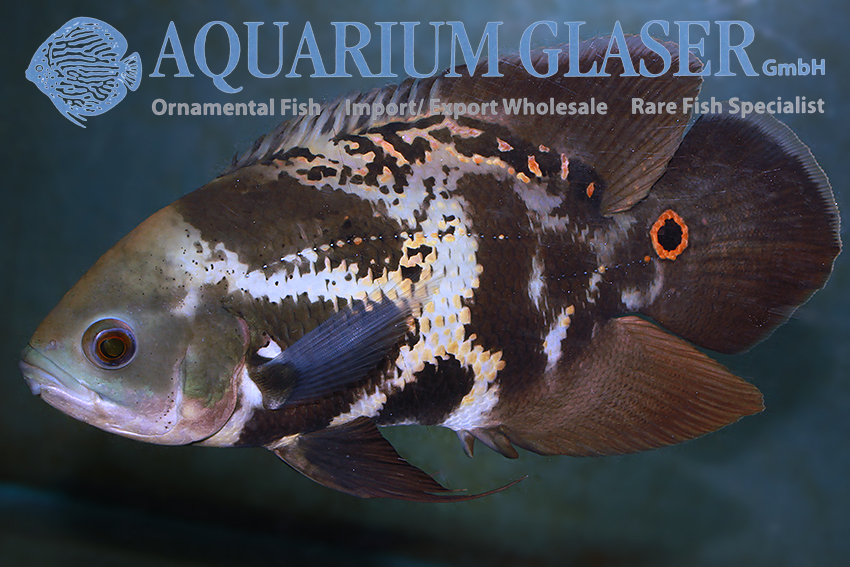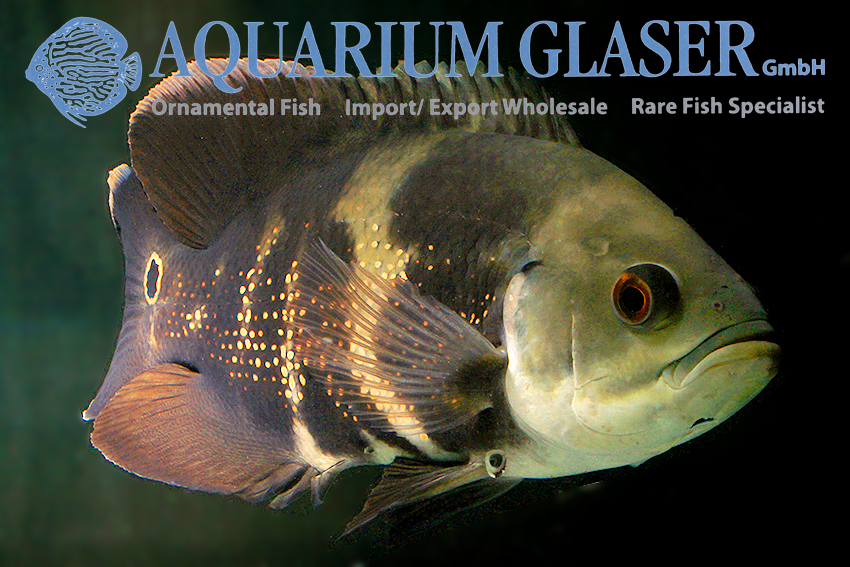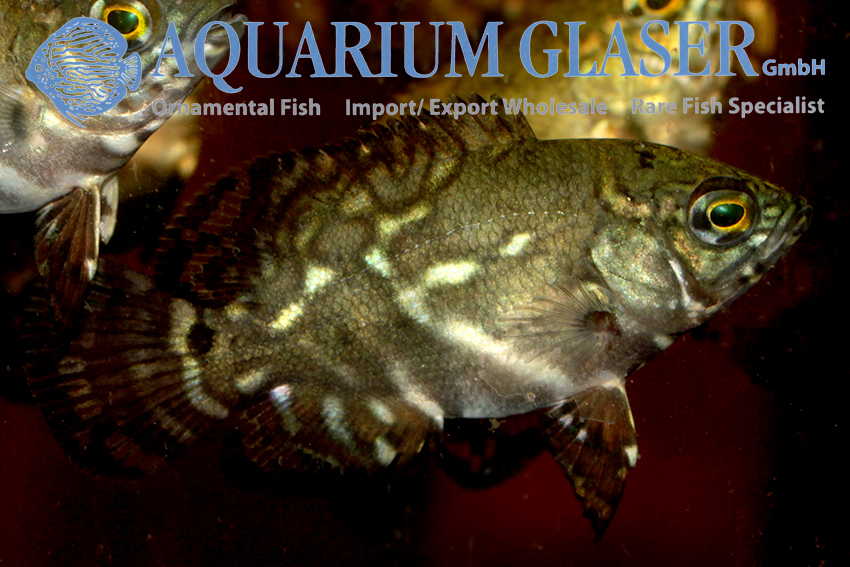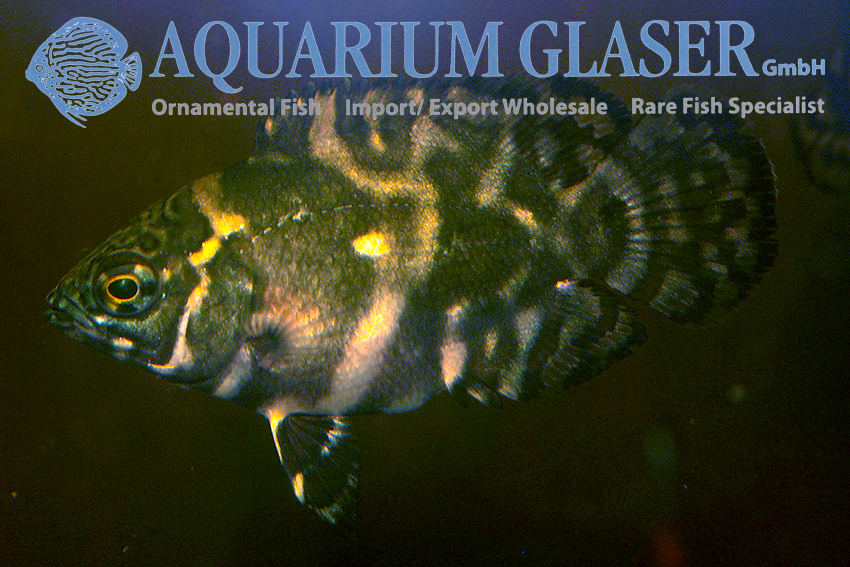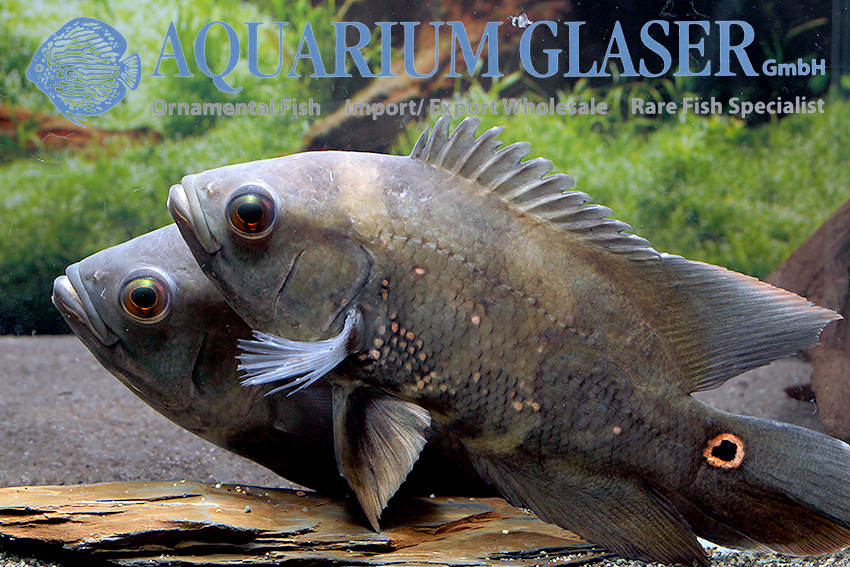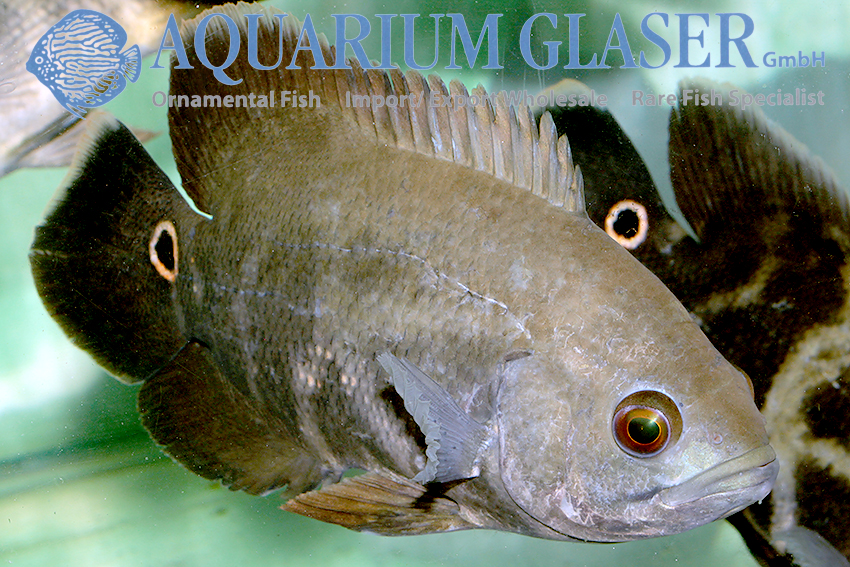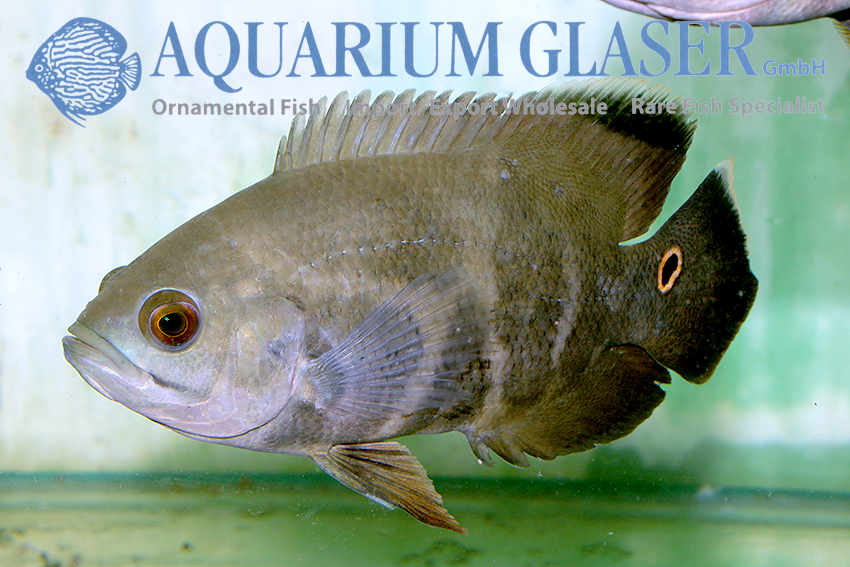Of the seven scientifically described species of Astronotus, only two are currently recognized by most ichthyologists, namely A. crassipinnis and A. ocellatus; however, a third, A. zebra, is so distinctly different in color from the others that there is little doubt as to its validity. Now a new name has been established: the Oscar from the Orinoco drainage and the Gulf of Paria in northern South America has been scientifically described as A. mikoljii (Perez Lozano et al., 2022). All images in this post show Astronotus mikoljii at different age stages and local populations.
The differentiation of Oscar species is decidedly tricky and can only be accomplished with certainty using molecular biology methods (DNA analysis). However, the juvenile coloration of three of the now four species considered valid is very different. The “common” Oscar, A. ocellatus, is well known from pet shops. A. crassipinnis juveniles are very conspicuous yellow-black colored (“Bumble-Bee-Oskars”) and A. mikoljii is very colorful – we have already presented such Orinoco wild catches more often (https://www.aquariumglaser.de/en/fish-archives/astronotus_ocellatus_wild_colombia_en/ https://www.aquariumglaser.de/en/fish-archives/astronotus_ocellatus_wild_en/ https://www.aquariumglaser.de/en/fish-archives/astronotus-ocellatus-colombia/). Unfortunately no juvenile picture of A. zebra has been published yet – at least we don’t know any.
Besides A. mikoljii there are – according to molecular data – at least three more species of Oscars in South America, which are named Astronotus sp. “East”, A. sp. “Negro” and A. sp. “Jurua” in the work of Perez Lozano et al. In the case of these species, however, it must be carefully checked whether they have not been described before and are wrongly listed as synonym. However, the matter is not simple, because Oscars were and are brought within South America also again and again as food fish into areas, in which they were not native originally at all. In addition, this may have led to hybrids, which are also difficult to represent molecularly.
A. mikoljii was named after Ivan Mikolji, an avid artist, nature lover, and explorer of Venezuela and Colombia who is also an ornamental fish exporter. Mikolji’s Oscar, like all Astronotus species, usually grows to 25-30 cm in length and does not differ from the other species in terms of care and breeding.
Literature: Perez Lozano A, Lasso-Alcalá OM, Bittencourt PS, Taphorn DC, Perez N, Farias IP (2022): A new species of Astronotus (Teleostei, Cichlidae) from the Orinoco River and Gulf of Paria basins, northern South America. ZooKeys 1113: 111–152. https://doi.org/10.3897/zookeys.1113.81240
Text & photos: Frank Schäfer





